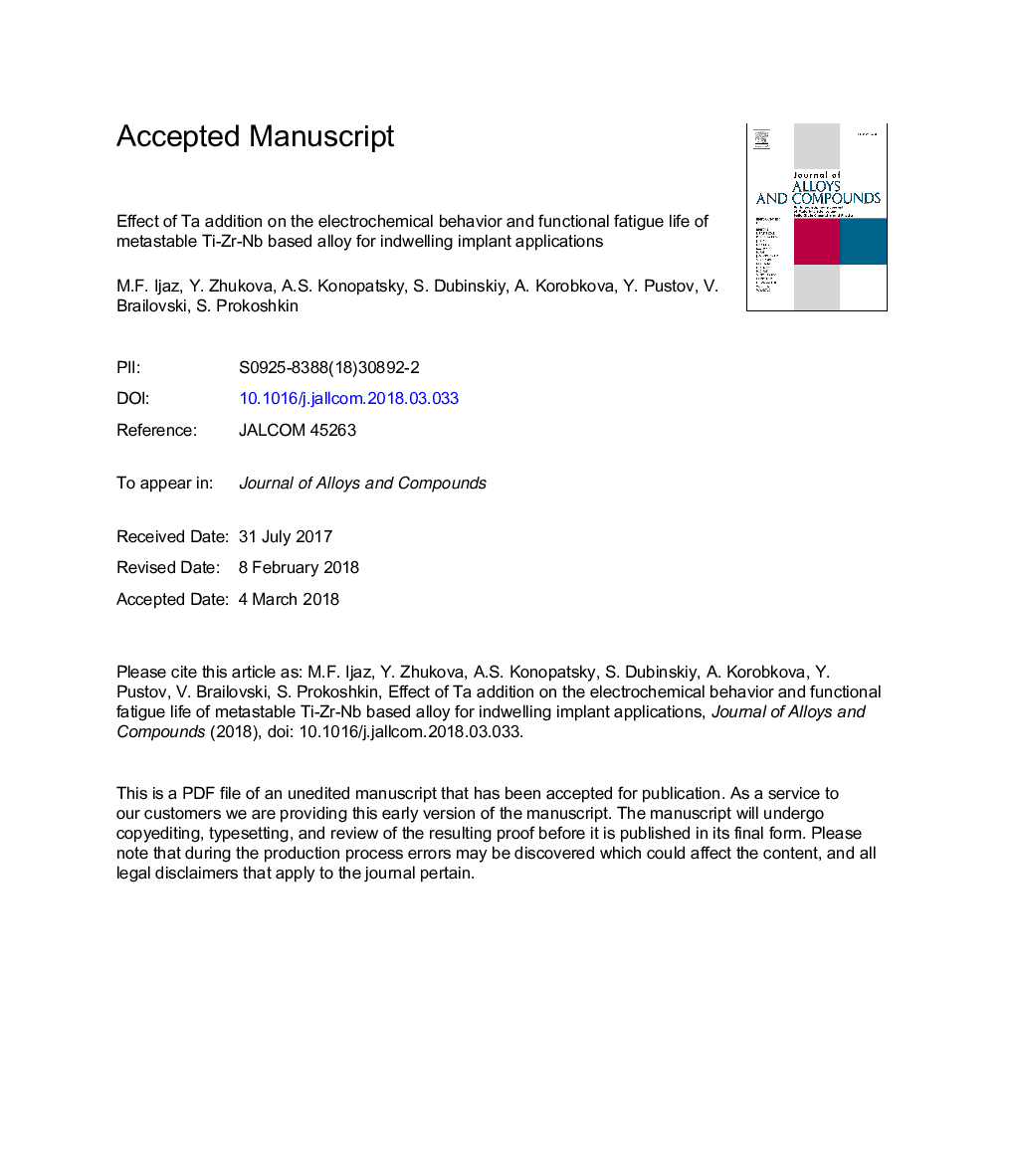| Article ID | Journal | Published Year | Pages | File Type |
|---|---|---|---|---|
| 7992175 | Journal of Alloys and Compounds | 2018 | 19 Pages |
Abstract
In this paper, the effects of Ta substitution for Nb, on the microstructure and corrosion fatigue behavior of metastable Ti-18Nb-14Zr biomedical alloy are investigated for the first time. For this purpose, besides previously studied ternary Ti-18Zr-14Nb alloy, new quaternary Ti-18Zr-13Nb-1Ta (at.%) biomedical alloy was also synthesized by vacuum arc remelting method and subjected to thermomechanical treatment processes. The in situ electrochemical behavior and subsequent functional fatigue life of both alloys showed a strong dependence on the composition and microstructure. The electrochemical results from the test bench demonstrated that during monotonic cycling the fatigue life of Ta-added alloy was significantly longer than that of the Ti-18Zr-14Nb alloy. Thus, the addition of Ta to the ternary Ti-18Zr-14Nb alloy was found to be very effective in increasing the resistance to fatigue degradation mainly by exhibiting excellent protective passivation tendency. Based on the electrochemical evaluation and fractrographic characteristics, it is concluded that the combined effect of the stable passive film formation and higher development of a nanosubgrained structure in β phase results in the prolonged fatigue life of Ta-added alloy.
Related Topics
Physical Sciences and Engineering
Materials Science
Metals and Alloys
Authors
M.F. Ijaz, Y. Zhukova, A. Konopatsky, S. Dubinskiy, A. Korobkova, Y. Pustov, V. Brailovski, S. Prokoshkin,
